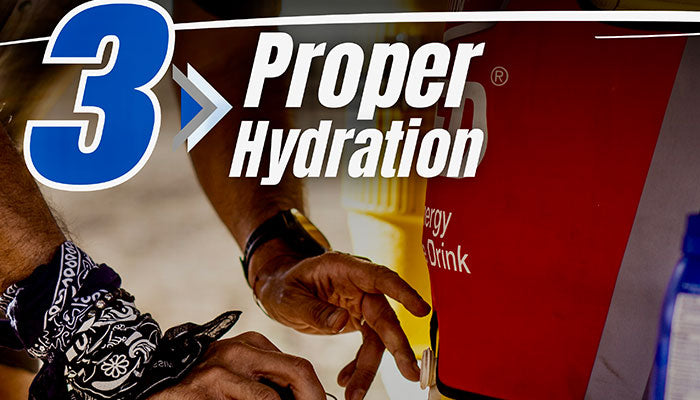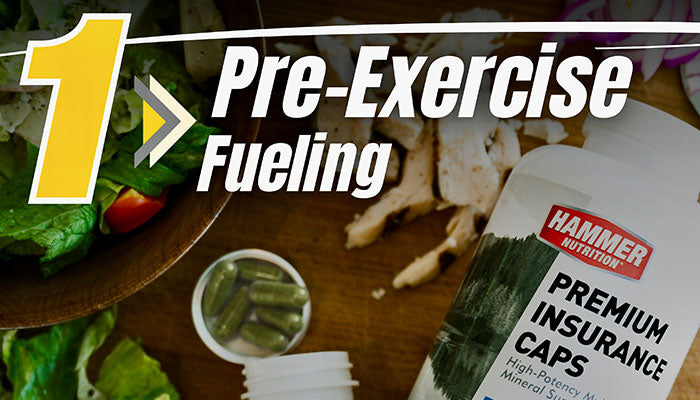What and how much you consume during exercise can be the difference between crushing it and being crushed
Our Recommendations
- Consume 120 to 180 calories per hour of activity.
- Fuel with complex carbohydrates like maltodextrin instead of simple sugars or blends.
- For exercise longer than two hours, your primary fuel should include protein in a ratio of about 8:1 carbs to protein.
As with every aspect of performance, proper nutrition requires planning and practice if you want to reap the benefits on race day. Here’s the inside track on successfully fueling all your activities.
CARBOHYDRATES
Athletes know “carbs are king” when it comes to fueling for endurance exercise. But you can’t consume just any carbohydrate at any time. Here’s what works:
Complex carbohydrates offer steady, usable energy without stomach distress.
Products containing simple sugars—typically sucrose, f ruc t o se, and /or g lucose (dextrose)—must be extremely diluted (a 6 to 8% solution in water) to be digested. This solution is too weak to meet the caloric needs presented by endurance exercise. But, increasing the solution will cause the sugars to sit in the gut as fluids are recruited from elsewhere in the body. This “osmotic pressure” increases rates of dehydration and electrolyte depletion and often causes severe GI issues.
In contrast, complex carbohydrates (such as those found in HEED® and Hammer Gel®) can be efficiently digested at solution concentrations of up to 18%. You can therefore absorb sufficient calories to fuel your exercise hour after hour, without overconsuming fluids or causing digestive distress.
FAST ENERGY WITHOUT THE CRASH
The complex carbohydrate source in Hammer Nutrition’s fuels is maltodextrin. This easily absorbed starch elevates blood sugar rapidly for the quick energy you need during exercise. However, the body takes longer to break down the molecular structure of complex carbohydrates like maltodextrin, keeping blood sugar levels stable over time. While sugars spike insulin levels and then quickly drop them–leading to “peaks and valleys” of energy–complex carbohydrates raise blood insulin just as effectively, but without the corresponding “crash.” Your energy will be stable and reliable, no matter the distance.
AVOID MULTIPLE CARBOHYDRATE SOURCES DURING EXERCISE
Some sports fuels contain a mix of simple sugars and complex carbohydrates. However, like simple sugar alone, these blends are only absorbable at either very low solutions or exceedingly low heart rates (like when taking a brisk walk). If you want steady energy while pushing the pace, steer clear of simple sugars, regardless of what they’re mixed with.
FATTY ACIDS
Even the leanest athletes have vast stores of caloric reserves in the form of body fat, with larger athletes’ bodies holding upwards of 100,000 calories of expendable energy. When exercise goes beyond two hours, these fatty acids should be the body’s primary fuel, providing approximately 60 to 65% of your energy needs. However, when you consume too many calories, your body switches gears the use the food you’ve eaten and your carbohydrate reserves instead. In order to support your body’s natural ability to efficiently access energy stores from fat, consume just enough calories to feel your best during exercise (no more than about 180 calories per hour).
PROTEIN
For activities lasting longer than 90 to 120 minutes, 5 - 15% of your calorie expenditure will come from protein. If your fuel doesn’t supply protein, your body will scavenge it from muscle tissue, causing muscle fatigue and breakdown, post-exercise soreness, and a weakened immune system.
To avoid this muscle cannibalization, your fuel should incorporate protein in a ratio of about 8:1 (by weight) of carbs to protein. Sustained Energy, Perpetuem®, and Perpetuem Solids® meet this requirement and are your best fuel choices for long-duration exercise. For these sessions, use a fuel containing protein from the get-go.









